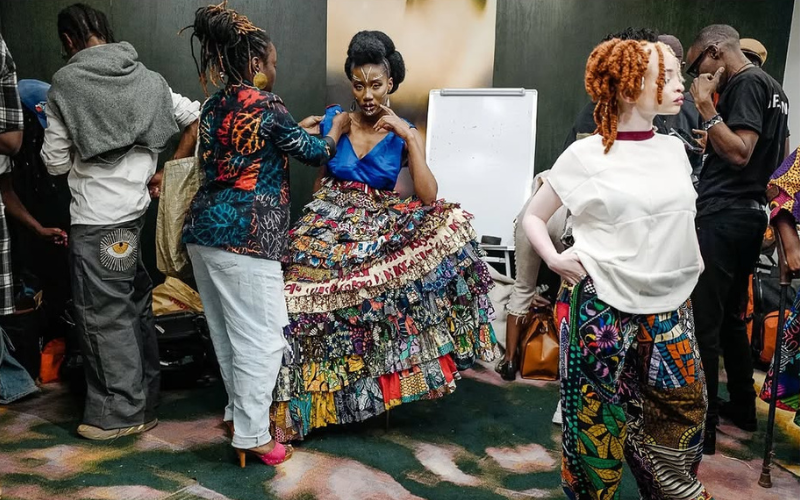Far from the conventional runway lined with new designer pieces, petite models standing 5’9” tall with 24-inch waists, Eco Fashion Week embodied effortless elegance, redefining beauty beyond the usual standards.
This show was a true scene-stealer, boldly inclusive and bound by a single rule: no new clothes. Here, sustainability took centre stage over superficial glamour.
As fashion is increasingly defined by consciousness rather than consumption, Eco Fashion Week became a revolution draped in art, inclusion, and innovation. Gone are the days when glamour was measured solely by price tags and novelty; this runway proved that creativity and conscience can share the same spotlight.
The show’s theme, Reimagined, A Story Told, celebrated upcycling as both a necessity and an art form.
Twelve designers took on the challenge of transforming ordinary, discarded materials into statement pieces that spoke volumes about environmental responsibility and aesthetic brilliance.
Patchwork dominated the runway, not just as a technique, but as a philosophy. Every stitch told a story of rebirth: fragments of old fabrics joined together to create fresh narratives of beauty and endurance.
One of the most striking elements of the show was its inclusivity. Models living with disabilities graced the runway with confidence and grace, redefining what it means to represent beauty in the modern age. Each step challenged long-standing industry norms, emphasising that fashion belongs to everyone, regardless of body type, ability, or background.
This moment of inclusion wasn’t merely symbolic, it was transformative. The audience rose in admiration, not just for the designs but for the spirit of acceptance and equality woven into every fabric.
Jewellery pieces adorned the models like whispers from heaven: intricate, celestial, and almost ethereal in their craftsmanship. Catering to both minimalist tastes and bold maximalist expressions, the jewellery was the perfect finishing touch, an addition that felt essential rather than excessive.
Linens, tie-dyes, and sisal threads brought an earthy harmony to the collection. Natural tones and hand-dyed patterns offered a warm, nostalgic feel, reminiscent of craft markets, homesteads, and local artisans whose hands carry centuries of untold artistry.
Ten unique designs, all upcycled from discarded curtains and bed sheets, came together to form collections radiating effortless minimalism. Each piece stood as proof that sustainability and elegance can harmoniously blend into timeless fashion.
What made this runway particularly captivating was its authenticity. It didn’t hide behind exaggerated glamour or fast-fashion trends.
Instead, it embraced imperfection: frayed edges, uneven textures, and unpolished finishes became the show’s greatest triumphs. They reflected the beauty of handmade work, the dignity of repurposed materials, and the ethos of environmental consciousness.
The show ended with a powerful call for inclusivity, not just in representation, but in design itself.
The message was clear: clothing should be constructed with everybody in mind. This means adjustable fits, adaptable styles, and a deeper understanding of the wearer’s lived experience. The future of fashion, as this show eloquently declared, lies not in exclusion or exploitation, but in empathy and evolution.
The “No New Clothes” runway left the audience with more than admiration; it left them with introspection, asking difficult but necessary questions: What if fashion stopped chasing newness and started nurturing value? What if every garment carried a story of renewal rather than waste?
As models made their final walk, the applause wasn’t just for the clothes; it was for the courage to redefine fashion itself. In every patch, in every thread of sisal, and in every recycled linen piece, there was proof that sustainability is not a passing trend; it is the future.
And that future, as this runway powerfully demonstrated, is already here.
